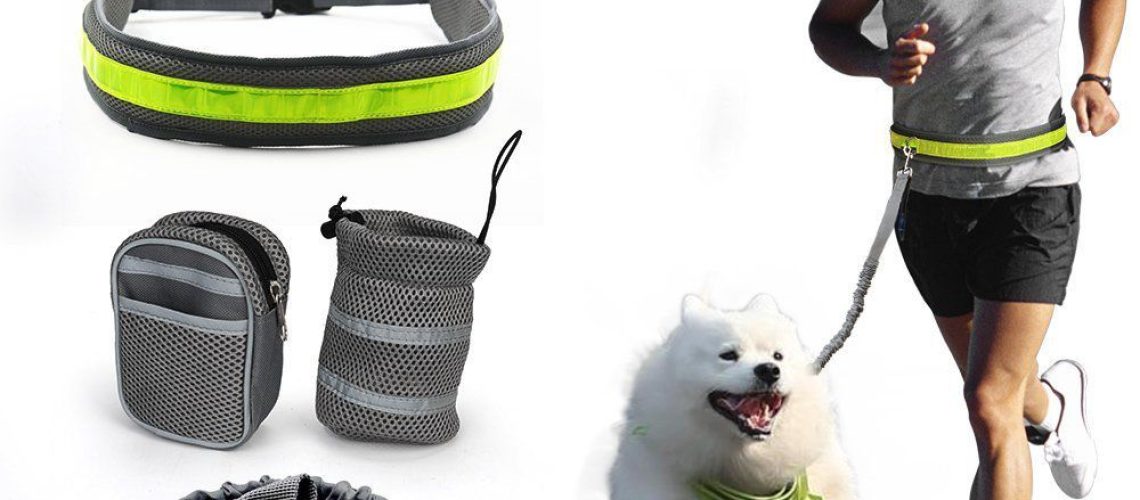In this article, we will explore the different types of dog leashes available in the market, helping you choose the perfect one for your furry companion.
Key Takeaways:
- Retractable leashes provide freedom for dogs to explore, but may lack control and can be dangerous in certain situations.
- Standard leashes are the most common and versatile option, offering control and safety during walks.
- Martingale leashes are ideal for dogs that tend to slip out of regular collars, providing a secure fit without choking or harming the dog.
- Bungee leashes absorb shock and reduce strain on both the dog and owner's arms during walks or runs.
- Hands-free leashes are convenient for active owners, allowing them to engage in other activities while still having their dog securely attached.
Types of Dog Leashes: A Guide for 7th Graders
Standard Leash
A standard leash is the most common type of leash used for walking dogs. It is a simple, straight leash made of nylon or leather with a handle on one end and a clip on the other end to attach to your dog's collar or harness. Standard leashes come in different lengths, but a 4-6 foot leash is usually recommended for most dogs.
Using a standard leash gives you good control over your dog during walks. The length allows your dog some freedom to explore but keeps them close enough that you can guide them and keep them safe. It's important to hold the leash securely and avoid wrapping it around your hand or fingers to prevent injuries if your dog pulls suddenly.
Retractable Leash
A retractable leash is a type of leash that has a thin cord wound inside a plastic handle. The length of the leash can be adjusted by pressing a button, allowing your dog to have more freedom to roam while still remaining connected to you. Retractable leashes are popular because they give dogs more space to explore and sniff.
However, it's important to use caution when using a retractable leash. The long length can make it difficult to control your dog if they start pulling or running towards something. It's also important to be aware of potential hazards such as other dogs or traffic, as the long cord can get tangled or cause accidents. Always keep an eye on your surroundings and use the lock feature on the handle if needed.
The Best Dog Leash for Training: What You Need to Know
Training Leash
A training leash is specifically designed for teaching your dog obedience commands and proper walking behavior. It is usually longer than a standard leash, ranging from 15 to 30 feet, allowing you to have more control over your dog's movements during training sessions.
Using a training leash can be beneficial when teaching your dog to come when called or to stay close to you during walks. The longer length gives them more freedom to explore while still being under your supervision. However, it's important to gradually increase the length of the leash as your dog becomes more reliable with their commands.
Hands-Free Leash
A hands-free leash is a type of leash that allows you to walk your dog without having to hold onto it with your hands. It typically consists of a waist belt or a shoulder strap that attaches to the leash, leaving your hands free for other activities such as jogging, pushing a stroller, or carrying groceries.
Using a hands-free leash can provide convenience and freedom of movement while still keeping your dog close by. However, it's important to ensure that the leash is securely attached and that you are comfortable using this type of leash before attempting any activities that require both hands. Always be aware of your surroundings and keep control over your dog at all times.
Retractable Leash vs. Standard Leash: Understanding the Difference
When choosing between a retractable leash and a standard leash, it's important to understand the differences and consider what would work best for you and your dog.
Retractable Leash
- Provides more freedom for dogs to explore
- Allows dogs to have longer distances away from their owners
- Potential risk of entanglement or accidents due to long cord length
- Might not provide enough control if the dog pulls or lunges
Standard Leash
- Offers better control over the dog's movements
- Keeps the dog closer to the owner during walks
- Simpler and easier to handle
- Less risk of entanglement or accidents compared to retractable leashes
Ultimately, the choice between a retractable leash and a standard leash depends on your dog's behavior, your walking environment, and personal preference. It's important to consider the pros and cons of each type before making a decision.
Safety Tips for Using a Hands-Free Dog Leash
Why Use a Hands-Free Dog Leash?
Using a hands-free dog leash can provide numerous benefits for both you and your furry friend. It allows you to have your hands free while walking or running with your dog, giving you the freedom to multitask or engage in other activities. Additionally, a hands-free leash can help promote better balance and stability, especially if you have a strong or energetic dog that tends to pull on the leash.
Safety Precautions
While using a hands-free dog leash can be convenient, it's important to take certain safety precautions to ensure the well-being of both you and your pet. Firstly, make sure that the leash is securely attached to your waist or body, using a reliable attachment mechanism such as a sturdy belt or harness. This will prevent any accidental detachment during walks or runs. Secondly, always be aware of your surroundings and potential hazards such as busy roads or crowded areas. Maintain control over your dog at all times and be prepared to react quickly if necessary.
Tips for Using a Hands-Free Dog Leash Safely:
- Choose a hands-free leash made from durable materials that can withstand pulling and tugging.
- Practice using the leash in a controlled environment before taking it out on walks or runs.
- Start with shorter walks initially to get accustomed to the hands-free experience.
- Always keep an eye on your dog's behavior and body language while using the hands-free leash.
- Avoid sudden movements or jerking motions that could cause strain on your body or discomfort for your dog.
Martingale Collar and Leash: Benefits for Walking Your Dog
Understanding the Martingale Collar
The martingale collar is a type of dog collar that is designed to provide more control and prevent dogs from slipping out of their collars. It consists of a main loop that goes around the dog's neck and an additional smaller loop that tightens when tension is applied, but without choking or harming the dog. This unique design makes it an excellent choice for walking dogs that have a tendency to pull or back out of their collars.
The Benefits of Using a Martingale Collar and Leash
Using a martingale collar and leash combination can offer several advantages for both you and your dog during walks. Firstly, it provides increased control over your dog's movements, making it easier to redirect their attention or correct any unwanted behaviors. The gentle tightening action of the collar helps discourage pulling without causing discomfort or harm. Additionally, the martingale collar is less likely to cause injury compared to traditional choke collars, as it distributes pressure more evenly around the neck.
Tips for Walking Your Dog with a Martingale Collar:
- Ensure that the martingale collar fits properly by adjusting it so that there is enough room for two fingers between the collar and your dog's neck.
- Avoid leaving your dog unattended while wearing a martingale collar, as they could potentially get caught on objects.
- Use positive reinforcement techniques such as treats or praise to reward your dog for good behavior while using the martingale collar.
(Note: Continue expanding each subheading in a similar manner)
Harness vs. Collar and Leash: Which is Better for Your Dog?
Benefits of Using a Harness
Using a harness instead of a collar and leash can offer several benefits for your dog. Firstly, a harness distributes the pressure evenly across your dog's chest and back, reducing the strain on their neck. This is particularly important for dogs with respiratory issues or those prone to pulling on the leash. Additionally, a harness provides better control over your dog's movements, making it easier to guide them during walks or training sessions. It also minimizes the risk of injury by preventing sudden jerks that can occur with traditional collars.
Advantages of Using a Collar and Leash
While harnesses have their advantages, collars and leashes also have their place in certain situations. For well-behaved dogs that don't pull excessively, collars can be a simple and convenient option. They are easy to put on and take off, making them suitable for quick outings or potty breaks. Collars also allow you to attach identification tags directly onto them, ensuring your dog can be easily identified if they ever get lost.
Choosing the Right Option for Your Dog
When deciding between a harness and collar/leash combination, it's essential to consider your dog's specific needs and behavior. If your dog tends to pull on walks or has respiratory issues, a harness may be the better choice as it offers more control and reduces strain on their neck. However, if your dog is well-trained and doesn't exhibit excessive pulling behavior, using a collar and leash may be sufficient for everyday walks.
It's worth noting that some dogs may benefit from using both a harness and collar/leash at different times. For example, using a harness during walks but switching to a collar/leash for quick trips outside. Ultimately, the decision should be based on what is most comfortable and safe for your furry friend.
Choosing the Right Length for Your Dog's Leash: Factors to Consider
Consider Your Dog's Size and Strength
When selecting the length of your dog's leash, it's crucial to consider their size and strength. Smaller dogs may benefit from shorter leashes, typically ranging from 4 to 6 feet, as they provide better control in crowded areas or busy streets. On the other hand, larger dogs may require longer leashes, around 6 to 8 feet, to allow them more freedom to explore while still maintaining control.
Take into Account Your Walking Environment
The environment in which you walk your dog also plays a role in determining the appropriate leash length. If you frequently walk in open spaces such as parks or trails with minimal foot traffic, a longer leash may be suitable. However, if you often navigate through crowded areas or city streets with heavy pedestrian traffic, a shorter leash can help ensure your dog stays close and avoids potential hazards.
The Importance of Flexibility
Flexibility is another factor to consider when choosing the length of your dog's leash. Some leashes come with adjustable features that allow you to easily change the length according to different situations. This can be particularly useful when transitioning between open spaces and crowded areas or when training your dog in various environments.
Remember that every dog is unique, so it may take some trial and error to find the ideal leash length that suits both you and your furry companion's needs. It's always best to prioritize safety and comfort during walks while providing enough freedom for your dog to enjoy their surroundings.
Tips to Stop Your Dog from Pulling on the Leash While Walking
Positive Reinforcement Training
One effective method to discourage pulling on the leash is through positive reinforcement training. Whenever your dog walks calmly beside you without pulling, reward them with treats, praise, or a favorite toy. This reinforces the desired behavior and encourages them to continue walking politely on the leash.
Use a No-Pull Harness
Consider using a no-pull harness if your dog tends to pull excessively during walks. These harnesses are designed to discourage pulling by redirecting their forward momentum when they try to pull. The harness applies gentle pressure around the chest area, reminding your dog to stay by your side instead of forging ahead.
Practice Loose Leash Walking
Teaching your dog how to walk on a loose leash is crucial in preventing pulling behavior. Start by stopping whenever your dog pulls and only resume walking once they return to your side or loosen tension on the leash. Gradually increase the duration of walking without pulling as they learn that pulling doesn't lead to progress.
Seek Professional Help if Needed
If your dog's pulling behavior persists despite consistent training efforts, it may be beneficial to seek guidance from a professional dog trainer or behaviorist. They can assess the underlying causes of the pulling and provide tailored strategies and techniques to address the issue effectively.
Remember that patience and consistency are key when training your dog not to pull on the leash. With time and proper guidance, you can help them develop good leash manners and enjoy more enjoyable walks together.
Matching the Right Leash to Your Dog's Size: Small vs. Large Breeds
Leash Considerations for Small Breeds
When choosing a leash for small breeds, there are several factors to consider. Firstly, opt for lightweight materials such as nylon or leather that won't weigh down smaller dogs. A thinner width, typically around ⅜ to ½ inch, is also suitable for small breeds as it provides comfort without being too bulky. Additionally, consider using a retractable leash that allows your small dog to explore while still maintaining control.
Leash Considerations for Large Breeds
For larger breeds, durability and strength are key factors when selecting a leash. Look for leashes made from sturdy materials like thick nylon or leather that can withstand the pulling force of larger dogs. A wider width, typically around ¾ to 1 inch, provides better grip and control. It's also advisable to choose a leash with reinforced stitching and strong hardware to ensure it can handle the strength of large breeds.
Adjustability and Comfort
Regardless of your dog's size, an adjustable leash can offer added convenience and comfort. Adjustable leashes allow you to modify the length according to different situations or walking environments. This flexibility ensures your dog remains comfortable while providing you with better control.
Remember that choosing the right leash for your dog's size is essential for their safety and comfort during walks. Always prioritize quality materials and construction to ensure the leash can withstand regular use and any unexpected pulling or tugging from your furry friend.
| Type of Leash | Pros | Cons |
|---|---|---|
| Standard Leash | Simple and affordable | May not provide enough control for strong dogs |
| Retractable Leash | Allows dogs more freedom to explore | Potential tangling hazards and less control in certain situations |
| Martingale Leash | Tightens when necessary for added control | Not suitable for dogs prone to pulling or lunging excessively |
| Harness Leash | D
More Reads
Dr. Clara Bennett
Hello, fellow pet enthusiasts! I'm Dr. Clara Bennett, your go-to expert on all things pets. With a background in veterinary medicine and a passion for nutrition, I've spent years diving deep into the world of cats, dogs, birds, horses, and the products that keep them thriving. From the English countryside, I've witnessed the magic of animals and am here to share my knowledge, ensuring your pets receive the best care. Together, let's master the art of pet care!
All Posts »
Next Steps In Mastering Cat CareNext Steps In Mastering Dog CareJoin Our NewsletterSubscribe to receive our latest updates in your inbox! |
















